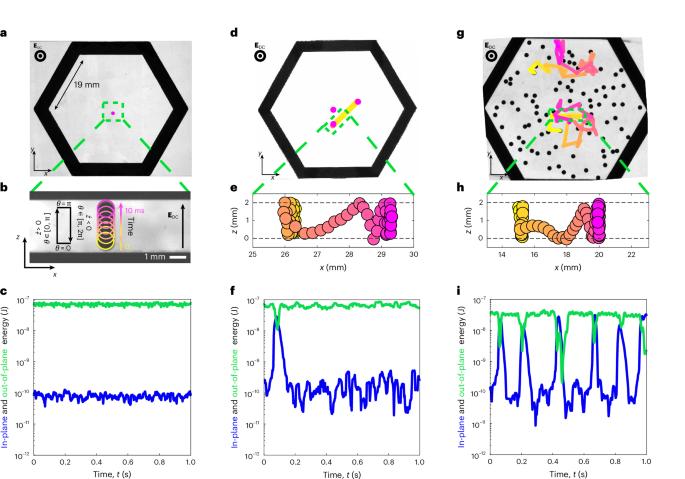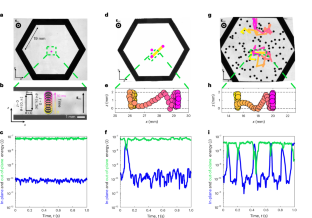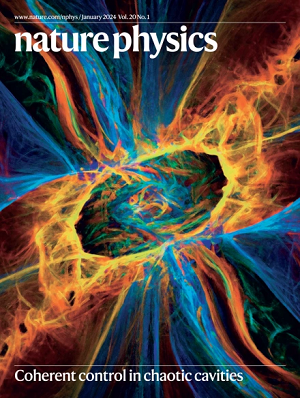控制集体活动使振荡气体结晶
IF 18.4
1区 物理与天体物理
Q1 PHYSICS, MULTIDISCIPLINARY
引用次数: 0
摘要
当活动与密度负耦合时,运动诱导的相分离发生在自行式单元组件中。相比之下,密度和活动之间的正耦合对活性物质集体行为的影响仍未得到探索。在这里,我们展示了集体活动可以从非移动构建块之间的这种积极耦合中产生。我们用接触电荷电泳供电的自维持振荡器进行了实验。虽然振子在设计上是非运动的,但当它们被限制在一起时,它们会自发地形成一种活性气体。碰撞的超弹性性质构成了正的密度-活度耦合,是活性气体性质的基础。阐明二元碰撞的起源使我们能够精确地控制活性气体的结构及其最终的结晶。除了考虑密度和活动之间被忽视的正耦合之外,我们的工作表明,丰富的集体属性不仅可以从活跃构建块之间的相互作用的对称性中出现,还可以从它们的适应性和响应性行为中出现。本文章由计算机程序翻译,如有差异,请以英文原文为准。


Control of collective activity to crystallize an oscillator gas
Motility-induced phase separation occurs in assemblies of self-propelled units when activity is coupled negatively to density. By contrast, the consequences of a positive coupling between density and activity on the collective behaviour of active matter remain unexplored. Here we show that collective activity can emerge from such a positive coupling among non-motile building blocks. We perform experiments with self-sustained oscillators powered by contact-charge electrophoresis. Although the oscillators are non-motile by design, they spontaneously form an active gas when confined together. The super-elastic nature of collisions constitutes a positive density–activity coupling and underlies the active gas properties. Elucidating the origin of binary collisions allows us to precisely control the structure of the active gas and its eventual crystallization. Beyond considering the overlooked positive coupling between density and activity, our work suggests that rich collective properties can emerge not only from the symmetry of interactions between active building blocks but also from their adaptable and responsive behaviour. In active matter systems, increasing density usually reduces activity. Now, in a system where density enhances activity, collective motion is shown to arise from non-motile oscillators when they are confined.
求助全文
通过发布文献求助,成功后即可免费获取论文全文。
去求助
来源期刊

Nature Physics
物理-物理:综合
CiteScore
30.40
自引率
2.00%
发文量
349
审稿时长
4-8 weeks
期刊介绍:
Nature Physics is dedicated to publishing top-tier original research in physics with a fair and rigorous review process. It provides high visibility and access to a broad readership, maintaining high standards in copy editing and production, ensuring rapid publication, and maintaining independence from academic societies and other vested interests.
The journal presents two main research paper formats: Letters and Articles. Alongside primary research, Nature Physics serves as a central source for valuable information within the physics community through Review Articles, News & Views, Research Highlights covering crucial developments across the physics literature, Commentaries, Book Reviews, and Correspondence.
 求助内容:
求助内容: 应助结果提醒方式:
应助结果提醒方式:


